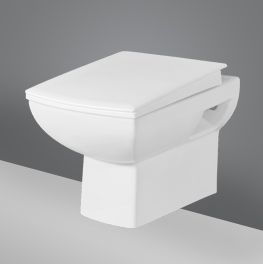
Whether you need an EWC or a normal toilet, you'll need to choose the right type of toilet for your bathroom. Before you make your decision, you should know what the difference is between each type of toilet. Read on to learn more about the different types of toilets and flush tanks, as well as the features of each. If you're looking to buy a new toilet or a Europe closet, you'll want to make sure to consider all the different factors, including the cost, before deciding on one type over the other.
WCs/Water Closets
One of the most common styles of WCs is the wall-hung commode. This type of WC is often more convenient for people with limited mobility, as it is attached to a wall, allowing for ample floor space. Another popular style is the wall-hung WC, which conceals both the flushing mechanism and water-outlet, making it suitable for smaller bathrooms. The wall-hung commode is also more attractive, providing a sleek, uncluttered look to the bathroom.
This type of toilet comes with three essential parts: a cistern, WC pan, and a rimless lid. The rimless design also makes the cleaning process more convenient as there is no rim to worry about. Some wall hung water closets are coated with a special glaze to prevent water seepage. Both types of WCs are available in a wide range of styles and prices, and most people can easily find replacement parts to repair and maintain their commode.

Types of WCs
Flushing tank WCs have two different types of water capacity: high-efficiency and low-flow. HETs or High Efficiency Toilets, on the other hand, can be either single-flush or dual-flush. The former requires a higher flush volume and a higher water pressure to operate, while HETs use less water to flush. These toilets have different water saving features, including water-saving adjustable flappers and a three-inch flush valve.
Rear-flush toilets send waste to the rear of the toilet, into the waste line of the building wall. For example, a rear-flush toilet is commonly installed in different Hotels. Up-flush toilets are usually used in bathrooms located below the sewer line.
Types of Flush Tanks for Water Closets
A typical toilet has a holding cistern that is fixed above the toilet bowl and contains a fixed volume of water. When the toilet is flushed, part of the water from the tank is released rapidly into the bowl. The remaining water flows down the drainpipe. A flapper valve acts as a seal to keep sewer smells from entering the toilet. Several different types of flush tanks are available, with different features.
The flushing system of an EWC is regulated by a float valve. In European water closet the float depresses when the fluid level drops and lever opens the valve. It closes when the float reaches a full position. Most tank-style toilets have tank fill valves. Two primary designs are available. The side-float design has been in use for over a century. The concentric design only came onto the market in 1957, and is becoming more common.
Types of Toilet Bowls
There are three basic styles of toilet bowls with flush tanks: round, elongated, and compact. Round bowls are smaller than elongated bowls, and they take up less space. Elongated bowls are more comfortable to use and are generally considered more hygienic. They are also required by plumbing codes in some commercial applications. These three styles have several distinct advantages, and you should choose one that suits your bathroom needs and your style.
Wash-down bowls: These toilets are less common in North America but are widespread in Europe and Australia. Water from the bowl rim pushes waste through the trapway. The diameter of the trapway may be as large as three inches. A larger trapway means less clogging, but larger water spots mean more streaking in the bowl. Generally, these toilets are more expensive than other types.

Price of WCs
There is a wide variety of WCs with flush tanks available on the market. Some are more expensive than others, and you may want to consider which type will best suit your needs. Some of these types come with a range of features, including dual-flush technology, which cuts down on water waste.
Toilets with flush tanks can cost some to replace. The tank is a significant portion of the toilet fixture, and if you're experiencing leaking, discoloration, or cracking, you should replace it. It's also possible to repair a damaged tank with sealant or recoating, but it's more cost-effective to replace the whole thing.
Installation of WCs
In most cases, installing a flush tank WC is as simple as unscrewing the bolts that secure the tank to the toilet bowl. Once this has been done, thread the mounting nuts on the bolts and tighten them with your fingers. Be careful not to over tighten the nuts as you can crack the bottom of the tank if you over tighten them. You can also work back and forth between mounting nuts to evenly distribute the pressure.
The next step is to remove the floor mounting bolts. You can do this by using a mini-hacksaw and vibrating the tool. While cutting off the bolts, be sure to cover them with the provided caps. Now that you have removed the old flush tank WC, you can connect the new one to the tailpiece on the water supply valve. After that, you should connect the new flexible water supply tube.

In Conclusion
Water closets are available in different styles and colours and sizes. They are also available in wall-mounted and floor-standing styles. You can find a high-quality, budget-friendly toilet from brands such as Orient Ceramics.
Make an Appoinment
Send us Message
Visit us at Address
Vagadiya Road, Thangadh - 363530,
Gujarat, India.
Gujarat, India.
© Copyright 2024, Orient Ceramics, All Rights Reserved.
Web Design & Development by Opal Infotech